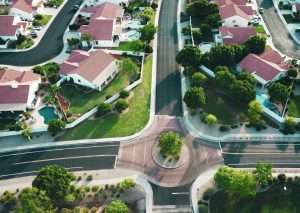 Article by: Michael Kernodle
Article by: Michael Kernodle
When it comes to investing in a community, understanding the intricacies of Homeowners Associations (HOAs) and Community Development Districts (CDDs) can make all the difference. In this article, we’ll unravel the mystery behind these two essential components of community living and investment.
Homeowners Associations (HOAs):
HOAs, also known as Homeowners Associations, are the governing bodies responsible for enforcing the rules and regulations within a community. These regulations often cover various topics, from property appearance guidelines to pet policies. But their role doesn’t stop there. HOAs are often responsible for:
Maintenance: Some HOAs manage maintenance tasks such as landscaping, trash pickup, and exterior property upkeep. This ensures that the community maintains its aesthetic appeal.
Project Approval: If you have plans for home improvement projects, renovations, or additions, your HOA will typically review and approve these projects to ensure they adhere to community standards.
Amenities: In many cases, HOAs oversee communal amenities like swimming pools, fitness centers, and parks, enhancing the overall quality of life within the community.
One critical thing to note is that HOA fees are usually paid separately from your mortgage, and they vary depending on the community’s services and amenities.
Community Development Districts (CDDs):
On the other hand, Community Development Districts, or CDDs, play a different but equally important role in community development. CDDs are typically responsible for building the fundamental infrastructure of a community. This includes:
Roads and Sidewalks: CDDs construct and maintain roads and sidewalks, ensuring safe and efficient transportation within the community.
Sewage and Utilities: They are responsible for sewage systems, water supply, and utility infrastructure, ensuring that residents can access essential services.
Amenities Development: In some cases, CDDs may also take on the task of building community amenities such as parks, playgrounds, and recreational facilities.
Unlike HOAs, CDD fees are usually incorporated into your mortgage payments, and they contribute to the development and maintenance of essential community infrastructure.
The Impact on Your Investment:
Understanding the differences between HOAs and CDDs is crucial when considering a community investment. While HOAs focus on maintaining the community’s appearance and regulating property-related matters, CDDs lay the foundation for the community’s functionality and infrastructure.
Your choice of community and its associated HOA and CDD can significantly impact your lifestyle and the cost of homeownership. Therefore, it’s essential to research and consider these factors when making investment decisions.
In conclusion, whether you’re buying a home or investing in a community, knowing the roles of HOAs and CDDs is vital. Each plays a distinct part in shaping the community’s character and functionality. By understanding these roles, you can make informed decisions that align with your investment goals and lifestyle preferences.
